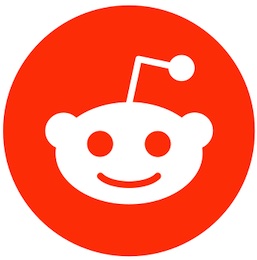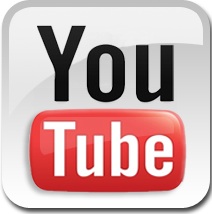 A free resource for nonprofit
organizations, NGOs, civil society organizations,
A free resource for nonprofit
organizations, NGOs, civil society organizations,
charities, schools, public sector agencies & other mission-based
agencies
by Jayne Cravens
via coyotecommunications.com
& coyoteboard.com
(same web site)
Getting More Viewers for Your
Organization's Online Videos

Videos are a great way to represent your organization's work, to show you
make a difference, to promote a message or action that relates to your
mission, etc. But just uploading a video to YouTube
(or Vimeo, for that
matter) isn't enough to attract an audience. Here are ways to get more
views for a nonprofit, NGO, school, charity or government agency's videos
on YouTube.
Note that many of these tasks would be great for an online volunteer to
undertake, with guidance from an appropriate staff member:
- Ensure that you have just ONE YouTube channel for your nonprofit,
non-governmental organization (NGO), charity, school, government agency,
etc. If you have somehow ended up with several channels, choose one to
keep, download the videos from the channels you will abandon and delete
those accounts, OR, if you have frequently-viewed videos on a channel
that isn't your main channel anymore, put the address of your main
channel in the description of the video.
- Give each video on your channel a descriptive, appropriate title.
- Give each video a well-crafted description that uses keywords that
you would want someone to associate with your organization and what is
in the video.
- Put appropriate hashtags in the video description. If the video
relations to people using technology for good, like a hackathon, you
would want to use #tech4good. If it relates to helping other people, add
#humanitarian. If it relates to public health, tag it with
#publichealth.
- Ask all staff and volunteers, including all of the members of the
board, to subscribe to your channel and to "like" every video on your
channel (within reason - if you have 100, ask them to "like" 10 or 20.
Do not require them to do this, however.
- Ask your clients to subscribe to your channel and to "like" videos on
your channel.
- Have links to the videos on your web site.
- Feature the videos on your organization's Facebook page and GooglePlus
account. You may want to link to the videos a few times a year.
- When you feature a video on your organization's Facebook page and
GooglePlus account, ask your volunteers and staff to consider sharing
those posts to their network as well.
- Tweet a link to a video. For instance, on World
Environment Day, tweet out a link to a video on your YouTube
channel, saying how it represents the environment and tag it with the
official tag for the day, #WorldEnvironmentDay. There
is a UN Day for most every occasion a nonprofit or NGO could ever
have.
- Encourage clients and volunteers to comment on a video on your
YouTube account, and respond to each comment (that isn't a troll) with
at least a "thank you", and "like" the comment as well.
- Caption your videos. YouTube has a free tool that you can use to do
this. By captioning your photos, you make them accessible for people
with hearing impairments and also allow people who can't use their
speakers in a particular moment to experience the video.
- If you have 12 or more videos, you could feature a video on your blog,
your web site home page, or a particular section of your web site each
month.
- You can blog about the making of a particular video, why it was
special or especially challenging, the results of the video, etc.
- Delete completely off-topic or trolling comments promptly.
Also, make a list of your videos and how many views and "likes" each
has before you do the aforementioned. Then do it again a month after you
do most of the aforementioned activities. Then do it again in three
months. And then again in six months. That's a great way to see if the
above has any impact on traffic to your YouTube channel.
Channel subscribers get notified of new uploads (when they are made
public) and subscribers tend to spend more time watching a channel's
videos than viewers who are not subscribed - and on YouTube and similar
sites, channels and videos with higher watch time are more likely to turn
up in search results and recommendations.
Follow me on Twitter
and Facebook,
and read my blog,
for more advice and examples related to online marketing.
Also see: Videos Your Nonprofit, NGO, Charity
or Other Mission-based Organization Should Have Online.
My own YouTube channel:
Here is my YouTube
channel. I hope you will subscribe to it and "like" some of the
videos! Note that I have my trainings for nonprofits, NGOs, etc. first.
I also have a
playlist of all of my trainings, some of which are not on my own
YouTube channel.
My video-editing services:
I'm can provide basic video editing services:
splicing different clips together, adding in title slides, fades between
scenes, intro music, captions, etc. Great for speeches, presentations,
client testimonials, volunteer testimonials and instructional videos.
This is a fee-based service. More
about these services and samples of my video editing work.
Other Resources (on my web site or blog):
- Daily, Mandatory, Minimal Tasks
for Nonprofits on Facebook & Twitter
There are a lot of nonprofits using Facebook and Twitter just to post
to press releases. And if that's how your nonprofit, NGO or government
agency is using social media, then your organization is missing out on
most of the benefits you could gain from such. Facebook, Twitter and
other social media are all about engagement. Social media is NOT
one-way communication; you want people and organizations to read your
information, but you also want them to respond to it. And they want
YOU to respond to what THEY are saying. I broke these must-do tasks
down into the most simple, basic list as possible - these tasks take
minutes, not hours, a day
- The
importance of Twitter lists
- The
awesome power of tweet tags
- Why
I won’t follow you on Twitter
- 14
(was 13) things you do to annoy me on social media
A tongue-in-cheek effort to encourage mission-based organizations to do
a better job with Twitter, Facebook, Instagram and other social
networking sites.
- Facebook
use to organize Women’s Marches: lessons learned
Facebook was an essential tool in organizing women’s marches all over
the USA in January 2017. They may have been the largest single day of
marches in US history. This blog is a list of things I learned observing
the online organizing first hand.
- For Schools: You Should Be Using Social
Media. Here's How
There are a lot of web sites saying what the benefits are for schools to
use social media. But there's few that give specifics on what a public
school should be sharing via Facebook, Twitter, etc. This advice talks
not only about exactly what your school should be posting to social
media, but the consequences of not doing so, as well how to handle tough
questions and criticism. It also links to legal advice.
- For Local City & County
Governments: You Should Be Using Social Media. Here's How
To not be using social media to deliver information and
to engage means you are denying critical information to much of your
community and promoting an image of secrecy and lack of transparency.
In fact, the lack of use of social media can be seen as your city
council or county government trying to hide something, and even lead
to rumors that are much harder to dispel than they would have been to
prevent. This advice talks not only about exactly what your school
should be posting to social media, but also how to handle tough
questions and criticism.
- Evaluating Online
Activities: Online Action Should Create & Support Offline Action
Hundreds of "friends" on an online social networking site. Thousands of
subscribers to an email newsletter. Dozens of attendees to a virtual
event. Those are impressive numbers on the surface, but if they don't
translate into more volunteers, repeat volunteers, new donors, repeat
donors, more clients, repeat clients, legislation, or public pressure,
they are just that: numbers. For online activities to translate into
something tangible, online action must create and support action. What
could this look like? This resource can help organizations plan
strategically about online activities so that they lead to something
tangible - not just numbers.
- How to handle online criticism of your
organization.
- The
dark side of the Internet for mission-based organizations
- Measuring
social media success? You’re probably doing it wrong.
- Volunteers
can help you reach more people on Facebook
- How to handle online criticism of your
organization.
- Snapchat’s
Potential Power for Social Good – with REAL examples.
- Stages of Maturity in Nonprofit Orgs Using
Online Services.
- How Not-for-Profit and Public Sector Agencies
REALLY Use Online Technologies
- Could
a Twitter exchange lead to change in a Kentucky nonprofit law?
- Police:
use social media to invite community participation, show compassion
- How
do international NGOs use Twitter?
- What
nonprofit & government agencies “get” FaceBook?
- Addressing
criticism, misinformation & hate speech online
- Nonprofit Organizations and Online Social
Networking (OSN): Advice and Commentary.
- Basic Press Outreach for Mission-Based
Organizations
Like fund-raising, press relations is an ongoing cultivation process.
Your agency strategy for press coverage needs to go beyond trying to
land one big story -- you want the press to know that you are THE agency
to contact whenever they are doing a story on a subject that relates to
your mission. These are basic, low-cost/no cost things you can do to
generate positive attention from the media.
- What are good blog topics for mission-based
organizations?
The word "blog" is short for "web log", and means keeping a journal or
diary online. Blogging is NOT a new concept -- people have been doing it
long before it had a snazzy media label. The appeal of blogging for an
online audience is that it's more personal and less formal than other
information on a web site. Readers who want to connect with an
organization on a more personal level, or who are more intensely
interested in an organization than the perhaps general public as a
whole, love blogs. Blogs can come from your Executive Director, other
staff members, volunteers, and even those you serve. Content options are
many, and this list reviews some of
your options
- For Nonprofits Considering Their Own
Podcasts: Why It's Worth Exploring, and Content Considerations
(includes my own podcast)
- How folklore, rumors and
urban myths interfere with development and aid/relief efforts and
how to prevent or address such.
- THE CLUETRAIN MANIFESTO
"We appreciate your efforts in spreading this important sedition." A
project from 1999 that is still completely relevant today (and shows why
the Internet has ALWAYS been "online social networking" and there's
nothing at all really all that new about sites like FaceBook). It's a
challenge to companies to quit thinking that they can control the
Internet and online culture and shape it to fit their outdated PR and
marketing dreams, and to quit fearing its "open" nature and, instead,
realize that this open system can actually be a good thing in the quest
to meet customer needs and move products and messages.
Quick Links
 my home
page
my home
page
 my
consulting services & my workshops
& presentations
my
consulting services & my workshops
& presentations
 my
credentials & expertise
my
credentials & expertise
 Affirmation that this web site is
created & managed by a human.
Affirmation that this web site is
created & managed by a human.
 My book: The
Last Virtual
Volunteering Guidebook
My book: The
Last Virtual
Volunteering Guidebook
 contact me
or see my
schedule
contact me
or see my
schedule
 Free Resources: Community Outreach, With & Without Tech
Free Resources: Community Outreach, With & Without Tech
 Free Resources: On
Community Engagement, Volunteering & Volunteerism
Free Resources: On
Community Engagement, Volunteering & Volunteerism
 Free Resources: Technology
Tips for Non-Techies
Free Resources: Technology
Tips for Non-Techies
 Free Resources:
Nonprofit, NGO & other mission-based management resources
Free Resources:
Nonprofit, NGO & other mission-based management resources
 Free Resources: Web
Development, Maintenance, Marketing for non-Web designers
Free Resources: Web
Development, Maintenance, Marketing for non-Web designers
 Free Resources: Corporate
philanthropy / social responsibility programs
Free Resources: Corporate
philanthropy / social responsibility programs
 Free Resources: For people
& groups that want to volunteer
Free Resources: For people
& groups that want to volunteer
 linking to
or from my web site
linking to
or from my web site
 The
Coyote Helps Foundation
The
Coyote Helps Foundation
 me on
social media (follow me, like me, put me in a circle,
subscribe to my newsletter)
me on
social media (follow me, like me, put me in a circle,
subscribe to my newsletter)
 how to
support my work
how to
support my work
To know when I have developed a new
resource related to the above subjects, found a great
resource by someone else, published
a
new blog,
uploaded a new
video,
or to when & where I'm training or presenting, use any
of the following social media apps to follow me on any of
these social media platforms:






Disclaimer: No guarantee of accuracy or suitability is made by
the poster/distributor of the materials on this web site.
This material is provided as is, with no expressed or implied
warranty or liability.
See my web site's privacy
policy.
Permission is granted to copy, present and/or distribute a limited
amount of material from my web site without charge if
the information is kept intact and without alteration, and is
credited to:

Otherwise, please contact me
for permission to reprint, present or distribute these materials
(for instance, in a class or book or online event for which you
intend to charge).
The art work and material on
this site was created and is copyrighted 1996-2025
by Jayne Cravens, all rights reserved
(unless noted otherwise, or the art comes from a link to
another web site).


 my home
page
my home
page



